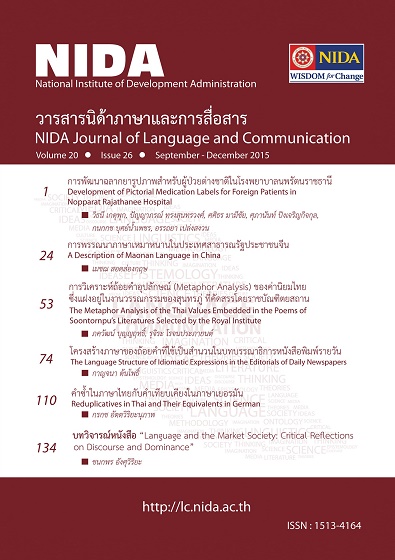REDUPLICATIVES IN THAI AND THEIR EQUIVALENTS IN GERMAN
Keywords:
reduplicatives, equivalents, Thai, GermanAbstract
This paper focuses on the analysis of the functions of reduplicatives in Thai and their German equivalents. Although German also has reduplicatives, there is only a limited number of them and their functions are restricted mostly to onomatopoeia. In contrast, reduplication in Thai can perform various grammatical functions and add meanings to their base terms. Using a self-compiled bidirectional parallel corpus consisting of Thai and German short stories as well as their translations into the other language, it has been discovered that reduplicative constructions in Thai show different functions such as pluralization, distribution, attenuation and intensification, as well as influences on aspectuality and modality; however, most of these cannot be expressed through reduplication in German. Usually they are marked by inflection, different parts of speech, syntactic reduplication, and word formation processes. In particular, derivation morphemes, which can rarely be found in an isolating language like Thai, show similar functions to Thai reduplicatives.
Downloads
How to Cite
Issue
Section
License
By submitting a manuscript, the author transfers the copyright for the article to School of Language and Communication, National Institute of Development Administration (NIDA), if and when the manuscript is accepted for publication. Though the journal is an open-access, reproduction of any material published in NIDA Journal of Language and Communication for non-personal and/or commercial purpose requires a written permission from School of Language and Communication, National Institute of Development Administration (NIDA).






